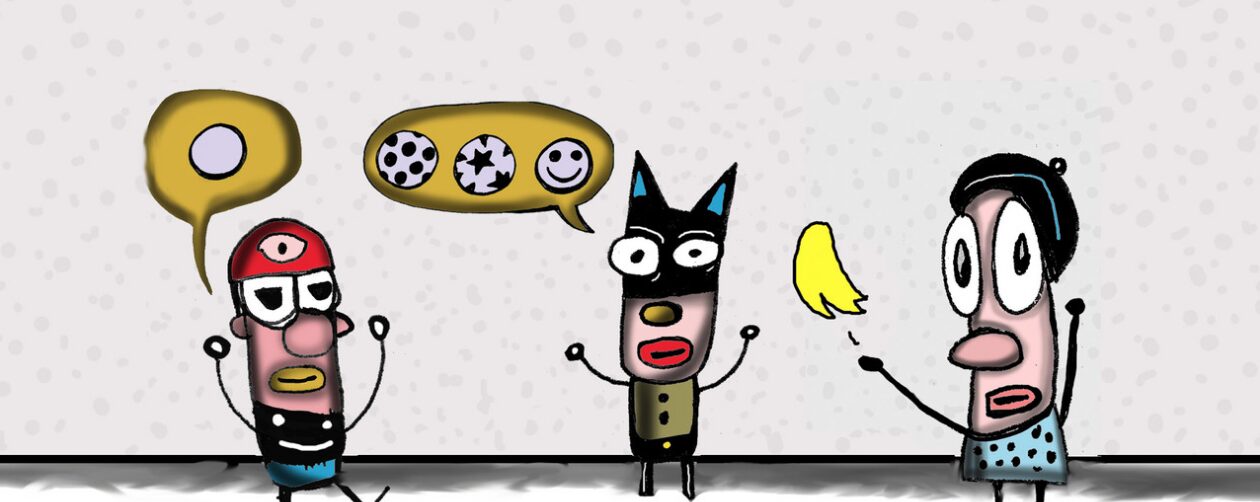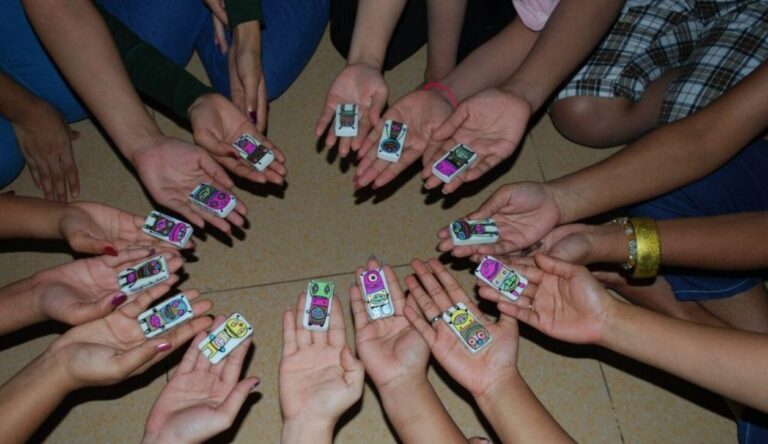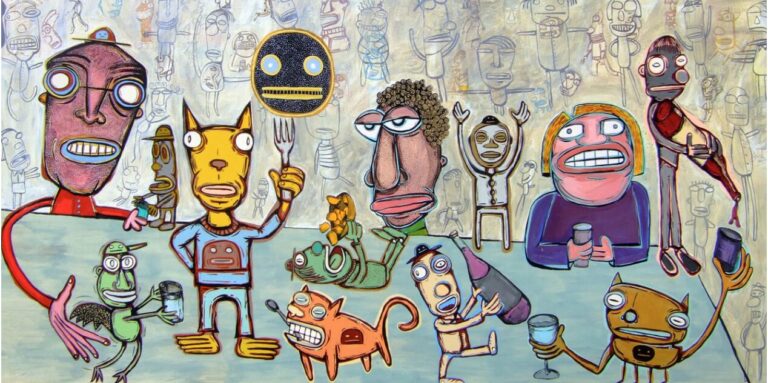Habits are hard to break. I was recently told to loose a few pounds and to stop eating… At least that is what I heard, what I was really told was to stop eating anything sweet or carb-like. So I really tried and was relatively successful, if you discount all of the scraps of bagels, potatoes and mac and cheese that my kids left on their plates that I habitually popped into my mouth as I moved them from the table to the sink. I couldn’t help myself. The solution, invite (tell) my kids to clear the table. Sometimes you need a little help.
Meetings have their own habits: They often happen at the same time, with the same people, in the same way. Often the agenda is packed to the gills and the participants are subjected to a barrage of presentations that are full of overly populated Power Point slides and a torrent of one-way download of information.
We (me and folks from On Your Feet) are being asked more and more to help our clients break some of these habits. They are getting some brutally honest feedback that their meetings are deadly, energy sucking and people leave not remembering what they heard. We have one client who has told us that she wants her legacy to be “She had good meetings”. So we are trying to help. Here are a few things that have been working:
1. Design your agenda: look for contrast, variety and change of energy. We advise the organizers to not over pack the time and to leave reflection and application time after important sections.
2. Be definitive about desired outcomes: What do people need to walk out with (a good rule here is no more than 3 things)? When we ref a meeting, these desired outcomes give us permission to stop and redirect conversations that veer off course. If the group still wants to go down that road we show them what they will have to give up, so they are making a conscious choice.
3. Connect people in the room. From our perspective, what most people want from a meeting is to be seen by the other folks in the room and to connect with them so they leave with more relationship currency in their emotional bank account. Don’t ignore this.
4. Prime the participants: Based on the desired outcomes, there is probably some behavior that you would like to see happen in the meeting. Using our bag’o tricks (I;m sure you have some as well, and we are happy to share) we have a priming experience to get them ready. For example, we recently reffed a 2 day meeting for 60 people. day one was a barrage of download, hearing 5 presentations from 5 different firms. Day two was a co-creative ideation where small groups took the best of the ideas that they heard from day, cherry picked and ideated to come up with the best solution. Participants had advocate individual ideas in day one and then let those go and co-create in day two. So at the start of day one we made this explicit and primed the group with experiences that first had them communicate something about themselves and advocate why others should adopt this behavior (what they would be doing in day one). In step two of this playful experience the group was prompted to let go of their agenda of advocacy and combine their ideas with a partner’s to come up with new ideas (what they would be doing in day two). The exercise is called 3 Favorites. Write me and we’ll send you instructions for playing.
5. Set the room. The room structure can save everything. Not just where the chairs go (but that can too), but how you set the content on the walls based on objectives. Paper is good. Slides disappear. Put up what people need to be able to remember, access, and use the info they are hearing.
6. Give the audience a job. Recently we reffed another meeting where the audience was instructed to listen to content with 3 cards in their hands labeled: 1: What excites me 2: I Wonder….3. I want to build on…. We introduced this before the presentation started in the room and gave the the group time to reflect and fill out after hearing presentations, building an ideas gallery on the walls as we went.
7. Read the energy: Always ask yourself: “what do they (participants) need now?” it might be energy, connection, reflection, application, bathroom break. But when in doubt …ask them. The audience will tell you what they need but you have to have the courage to admit that you don’t know. Funny enough, they will love you for it.
8. Change things in the moment: again do this based on what you are reading in the room. This might be switching the agenda around. Might be starting day 2 an hour later so people can get sleep, but the same rule applies: When in doubt, ask them.
9. Give them content…if needed. Sometime what meeting participants they need is new experience/learning, or even to be an audience and watch an improv scene, as long as you can tell them why this is important to them (or better yet facilitate them telling themselves) then good for it.
10. Stop before it’s over: there are other things that have to happen at the end (see steps 11 and 12) so leave time to make sure they happen.
11. Summarize. Walk the walls of your charts and paper and get the audience to tell you what happened throughout the day. Or if you want to show off, do it yourself adding bits of color to show what a kick ass listener you are. Either way it serves them because they can’t remember what happened at 8AM.
12. Get commitments to next steps. Get individuals, the group or leader to commit to next steps of action. These could be big structural things or simply scheduling a meeting with a few folks to move a thing on. But get them to commit and calendar it before they walk out the room.
13. Follow up with something visual. Lately we have been taking photos of what is happening in the room and then sending it to the group a few weeks later asking…”umm, what’s happened since we saw you last?” I am sure we could do a ton more of follow up…but people are busy and have moved on. Help them remember, but don’t give them more to do.
So there you go. This took exactly 56 minutes to think about and type, probably would have been shorter if I had a ref.
Gary Hirsch is the co-founder of On Your Feet a consultancy that uses improv to help organizations create, communicate, and collaborate. He is also the founder of Botjoy, a visual experiment in co-creation. Read more from Gary on the On Your Feet blog. You can reach him at gary@oyf.com



